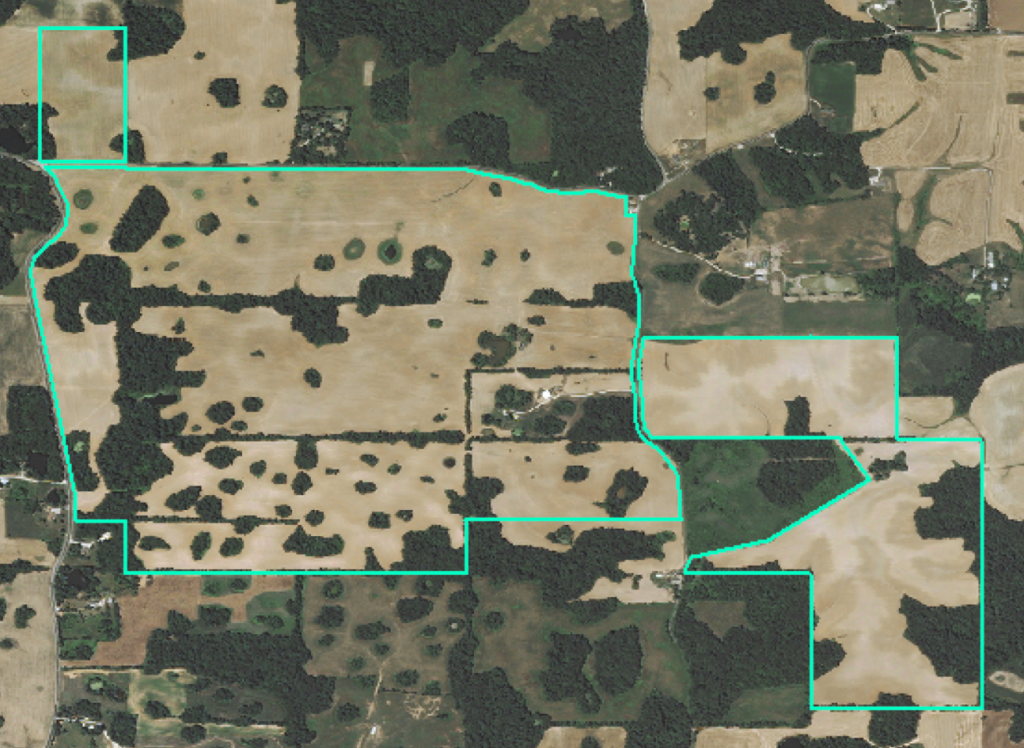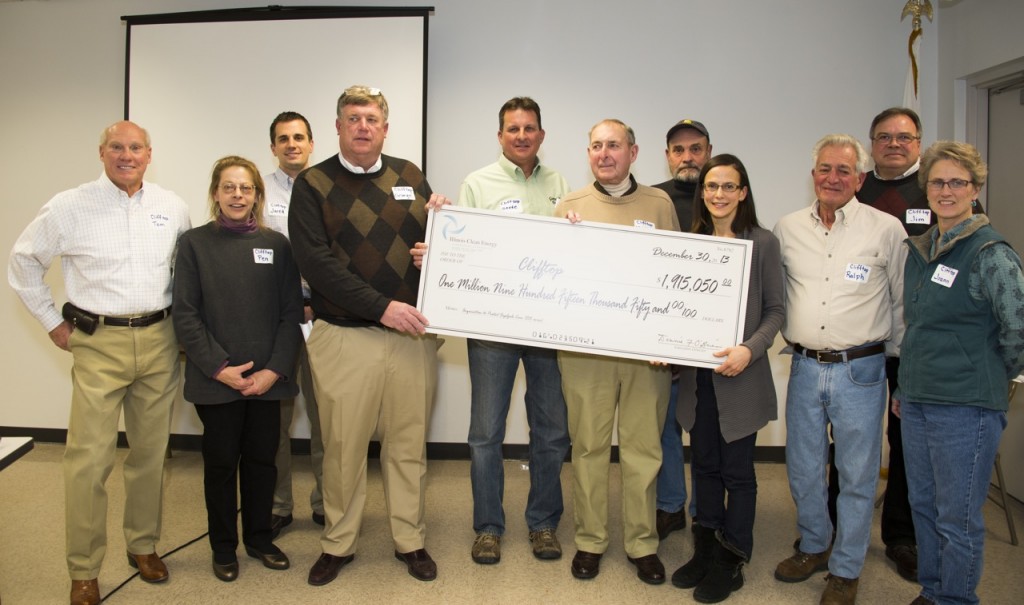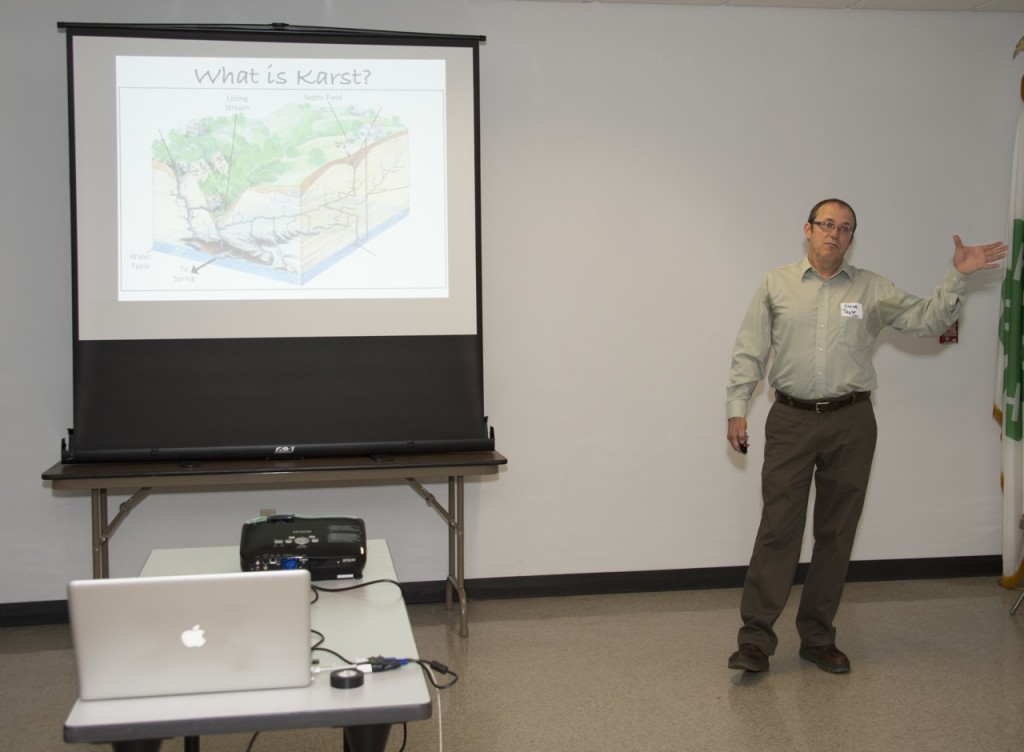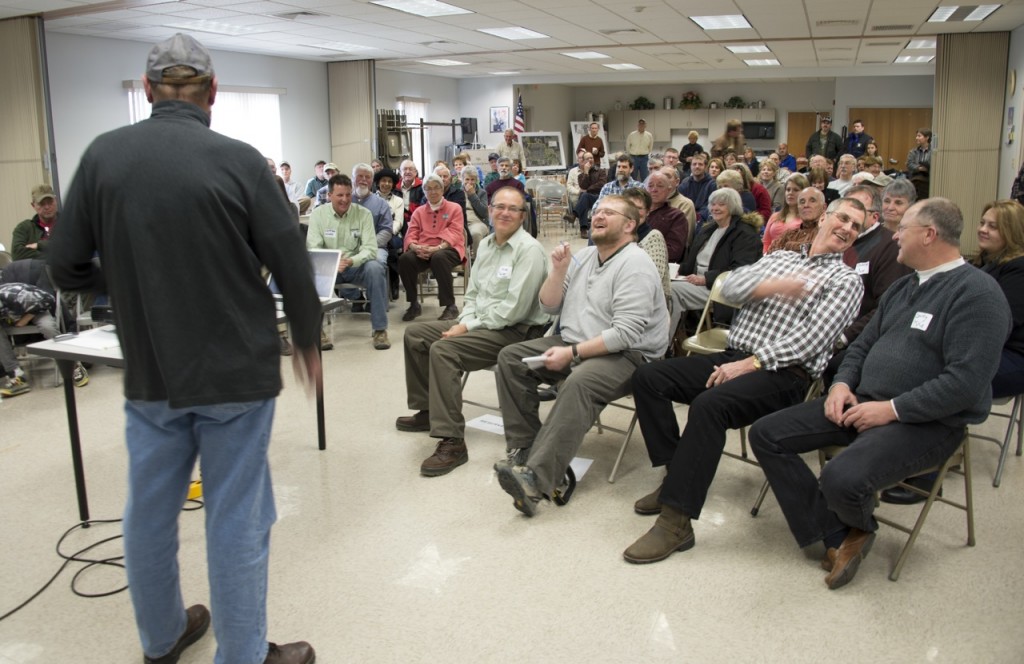Land Purchase to Protect Fogelpole Cave, Illinois’ Largest & Most Biologically Diverse Cave System

The 535-acre property surrounds IDNR's Fogelpole Cave Nature Preserve. Map courtesy Steve Taylor, Illinois Natural History Survey and Angela Mayer, Clifftop.
While the greatest river of North America flows beside our lands, other rivers — hidden and subterranean — run under the lands of Monroe County Illinois. The rivers running within a portion of Monroe County’s karst-sinkhole plain created cave systems and the waters continue to sustain highly specialized life forms.
Clifftop NFP ended 2013 on a high note as the organization purchased 535 acres of land that sits atop much of the Fogelpole Cave system, Illinois’ largest cave (the 51st largest cave in the U.S.) and our state’s most biologically diverse. “The Fogelpole Cave system is a nearly-pristine subterranean wilderness,” said George Obernagel, President of the all-volunteer organization’s Board of Directors. “When we learned in January of 2013 that this farm property, owned by the estate of Marvin Seibert, was slated for sub-division and auction sale, we knew that we had to get to work and try to keep this large acreage property intact and whole,” he stated.
One of their first actions was to seek expert advice on the cave system and its unique assemblage of cave-dependent animals. The group called on a friend and advisor to Clifftop for earlier projects, Dr. Steve Taylor, a biospeleologist at the Illinois Natural History Survey and University of Illinois-Urbana. Taylor enthusiastically agreed to work as lead science advisor for the project. “This property is so important, so vital to the overall cave system and its splendid biodiversity. With this purchase, Clifftop expands its role as a key land management and conservation organization in Southwestern Illinois,” Taylor said. “Clifftop has taken a huge step in conservation and I am excited to be a part of this and to continue to work with them as they build a legacy for the local community by conserving resources of state, national, even international importance,” Taylor added.

Jolie Krasinski (fourth from right), Program Officer with the Illinois Clean Energy Community Foundation, presents members of the Clifftop NFP Board of Directors a check for nearly $2 million.
The purchase, at more than $2.7 million, was made possible by extraordinarily generous grants: $1,915,050 ($1,905,050 towards the purchase price and $10,000 for initial restoration) from the Illinois Clean Energy Community Foundation, and $817,960 ($796,960 towards the purchase price and additional acquisition costs and $21,000 towards restoration and initial public access infrastructure costs) from the Grand Victoria Foundation. The cave-sciences community, including the Subterranean Ecology Institute, the National Speleological Society and the Illinois Speleological Survey, made donations of nearly $4,000. An additional foundation also contributed $5,000 to this acquisition. Joann Fricke, Clifftop’s Membership Chair, noted that members of the local community rallied to the cause and took the necessary final fund-raising for the purchase over the top. “This is another example of what we call local faces who cherish great places,” she said, adding, “generous members of our local communities provided more than $40,000 to this effort.”
Such local community support makes the entire organization effective, Carl DauBach, Clifftop’s Executive Director said. “Our volunteers make our land stewardship efforts possible, our membership and supporters join together to make land acquisitions like this one a success,” he added.
DauBach went on to note that the Fogelpole Cave system hosts a number of threatened and endangered species, including the Illinois Cave Amphipod, now known from only a half-dozen sites in Monroe County and nowhere else on the planet. A number of additional species that live within the Fogelpole system also are globally rare. Indiana bats, a federally-listed mammal species, use the Fogelpole system as both a winter hibernacula and, new evidence suggests, as a summer maternal roosting colony. DauBach said that members of the local community realize they have a “duty of care” for the special nature of the area – one of Illinois’ most natural resource rich – and Clifftop members in particular feel privileged to protect and preserve the Mississippi River bluff lands.

Steve Taylor, PhD, biospeleologist with the Illinois Natural History Survey & University of Illinois-Urbana, discusses karst land forms. Dr. Taylor is Clifftop's lead science advisor for the project.
Clifftop’s plans for the large tract include converting the currently row-cropped acreage to a prairie/savannah system, to benefit both surface wildlife and the groundwater quality for the cave system. DauBach said “The property contains numerous sinkholes – more than 300 – these and the soils make row-cropping both difficult and lead to extensive soil erosion.” Once restoration to native vegetation has commenced, Clifftop plans to open the area for general passive recreational activities, such as hiking, wildlife watching, photography and the simple pleasure of being in a landscape that, with time, should resemble what early Euro-American settlers first saw.
On-site science will be a part of the project, too, both DauBach and Taylor noted. “We’ll monitor changes in groundwater quality as surface land use is changed,” Taylor said, adding, “With time we may be able to provide improved guidance for land managers in karst areas.”
Jolie Krasinski, Program Officer for the Illinois Clean Energy Community Foundation, said that ” the Foundation is excited to be a part of this project. Clifftop board members possess the range of professional experience and expertise necessary to acquire this land and manage it in a way that benefits the habitat of Fogelpole Cave. The Foundation is proud to help in the protection of this natural resource of statewide and international scientific significance as well as in the creation of a new public preserve.”

More than 100 Clifftop members attended the January 25th celebration of the major land purchase and enjoyed learning about future plans for the property. Photo courtesy Tom Rollins, ThomasRollinsPhotography.com
Nancy Fishman, Executive Director of Grand Victoria Foundation, added that “the leaders of Clifftop — and the many volunteers they engage — bring passion, knowledge and commitment to this important cave system. And it’s contagious! We know when the restoration and public access are complete, visitors will be inspired to love the land, the water and many species that will thrive in this unique habitat. All of us at Grand Victoria Foundation are delighted to have the chance to support this momentous undertaking.”
Local faces can indeed protect great places.
